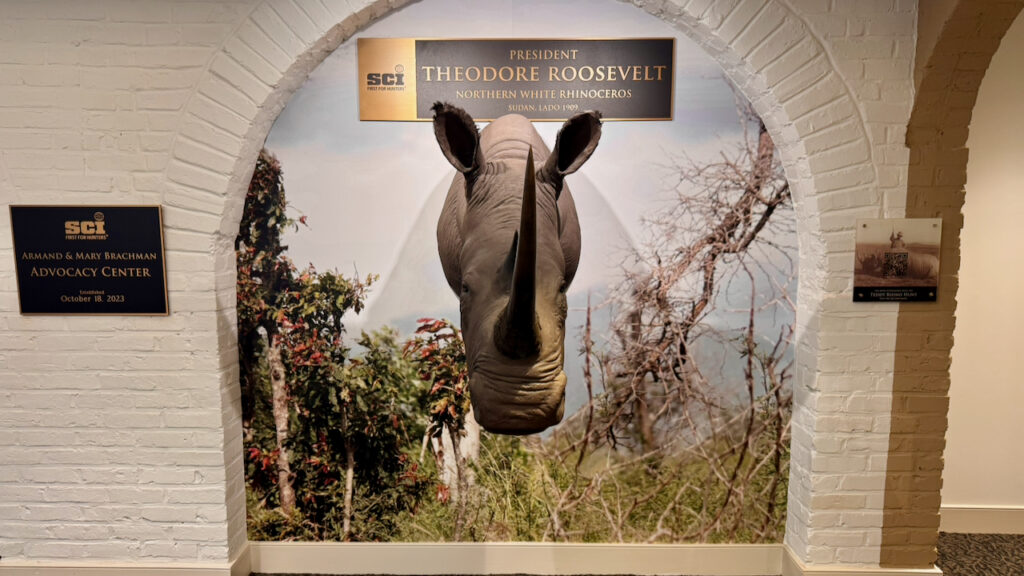
President Roosevelt’s White Rhino
Now proudly on display at the Hunters’ Embassy at SCI’s Armand and Mary Brachman Advocacy Center, this Northern White Rhinoceros was taken by President Theodore Roosevelt in early 20th century Sudan.
The Northern White Rhinoceros you see to your left was harvested by Theodore Roosevelt, the 26th President of the United States. He harvested this magnificent animal as part of his two-year hunting trip across eastern and central Africa on January 28, 1910, from the west Bank of the Nile River in the Lado District of what was is today Uganda and South Sudan. It was taxidermied by James L. Clark of New York, who was a masterful wildlife artist and photographer, and the first person known to film African wildlife in 1908.
This rhinoceros was one of 11,400 animal specimens taken on the former president’s above-referenced African safari, known as the Smithsonian-Roosevelt African Expedition. This safari, which was funded by industrialist and philanthropist Andrew Carnegie, aimed to collect specimens for the Smithsonian’s new natural history museum. As part of it, the President traveled and hunted across the eastern and central African continent with his son, Kermit. He described the hunt for this rhinoceros, as well as the hunt for other rhinos on this trip, in his book, “African Game Trails.” One cow from this hunt was recorded as having a 31” font horn, the longest of the collection.
The rhinoceroses harvested on this safari, including this Northern White Rhinoceros, were donated to the United States National Museum in Washington, D.C., the American Museum of Natural History in New York City, and the National Collection of Heads and Horns hosted by the New York Zoological Society. The New York Zoological Society was an organization established in 1906 by avid outdoorsmen to create a depository of mounted animals from around the world for future generations to learn about and appreciate the world’s unique biodiversity. This collection was so successful that it required a stand-alone building at the Bronx Zoo to house the collection by 1922. When the National Collection of Heads and Horns closed in the early 1970s, this specimen changed ownership and was ultimately given to Safari Club International. To see another rhinoceros collected during the Smithsonian-Roosevelt African Expedition, be sure to check out the National Museum of Natural History’s Hall of Mammals in Washington, D.C.
The New York Zoological Society and collections mentioned here were successful in driving public support for conservation and greater protection of wildlife and our natural resources, consistent with the champion of this cause, President Roosevelt, himself. Read more about this Northern White Rhinoceros and the National Collection of Heads and Horn’s co-founder William T. Hornaday’s statement from 1911 about it in the Bulletin of the New York Zoological Society by clicking here. (Note the measurements match exactly!)

